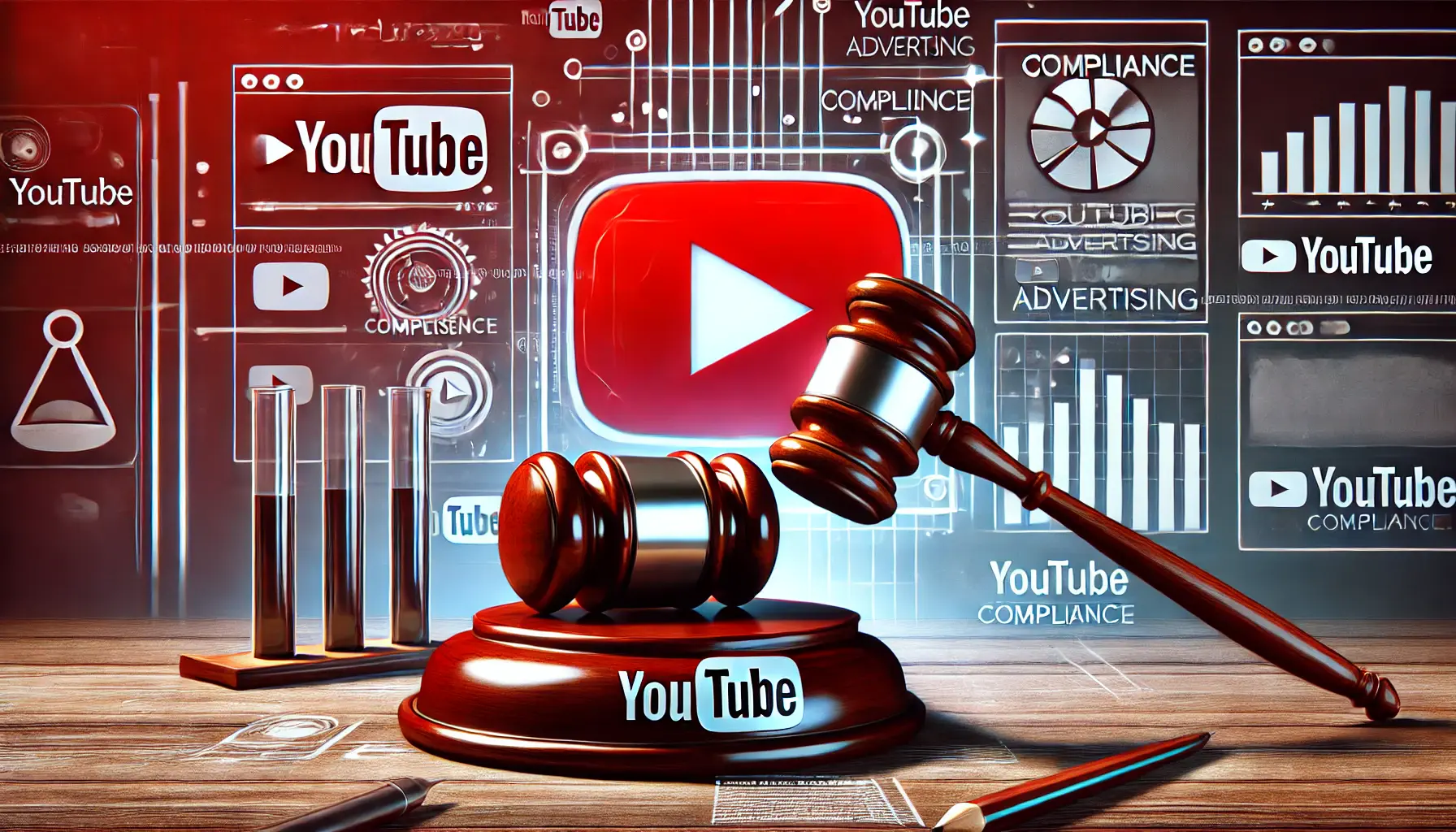YouTube advertising has grown to be more than a tool for expansion; it involves effective reach and engagementThe level of interaction and attention a user gives to your content or advertisement..
However, compliance with the advertising policies of YouTube is critical for businesses in the long run.
Breaching these policies can lead to ad rejections, suspensions, and even damage to your brand’s reputation.
Knowing how to stay compliant will help you create ads that stand out while staying within the platform’s strict boundaries.
In this article, we will explore the three essential compliance keys in YouTube advertising.
From understanding YouTube’s advertising policies to creating content that meets compliance standards and leveraging tools for effective compliance, you’ll gain the knowledge needed to navigate YouTube’s advertising landscape confidently.
- Understanding YouTube Advertising Policies
- Creating Ad Content that Meets Compliance Standards
- Leveraging Tools and Features for Compliance
- Handling Compliance Issues Effectively
- Staying Ahead of Compliance Challenges
- Achieving Success with Compliance in YouTube Advertising
- Frequently Asked Questions About Compliance in YouTube Advertising
Understanding YouTube Advertising Policies
YouTube has established a comprehensive set of policies to ensure that advertising content is safe, ethical, and aligned with its community standards.
These policies are designed to protect both viewers and advertisers while maintaining a high-quality user experience on the platform.

Illustration representing compliance with YouTube’s ad policies.
What are YouTube’s Ad Policies?
YouTube’s advertising policies outline the dos and don’ts for advertisers.
They include restrictions on harmful content, misleading claims, and inappropriate visuals.
For example:
- Ads promoting restricted products such as alcohol, gambling, or adult content must follow strict guidelines.
- Ads must be accurate and avoid sensationalism or unverified claims.
Adhering to these policies is essential for ensuring your campaigns are approved and reach the right audience.
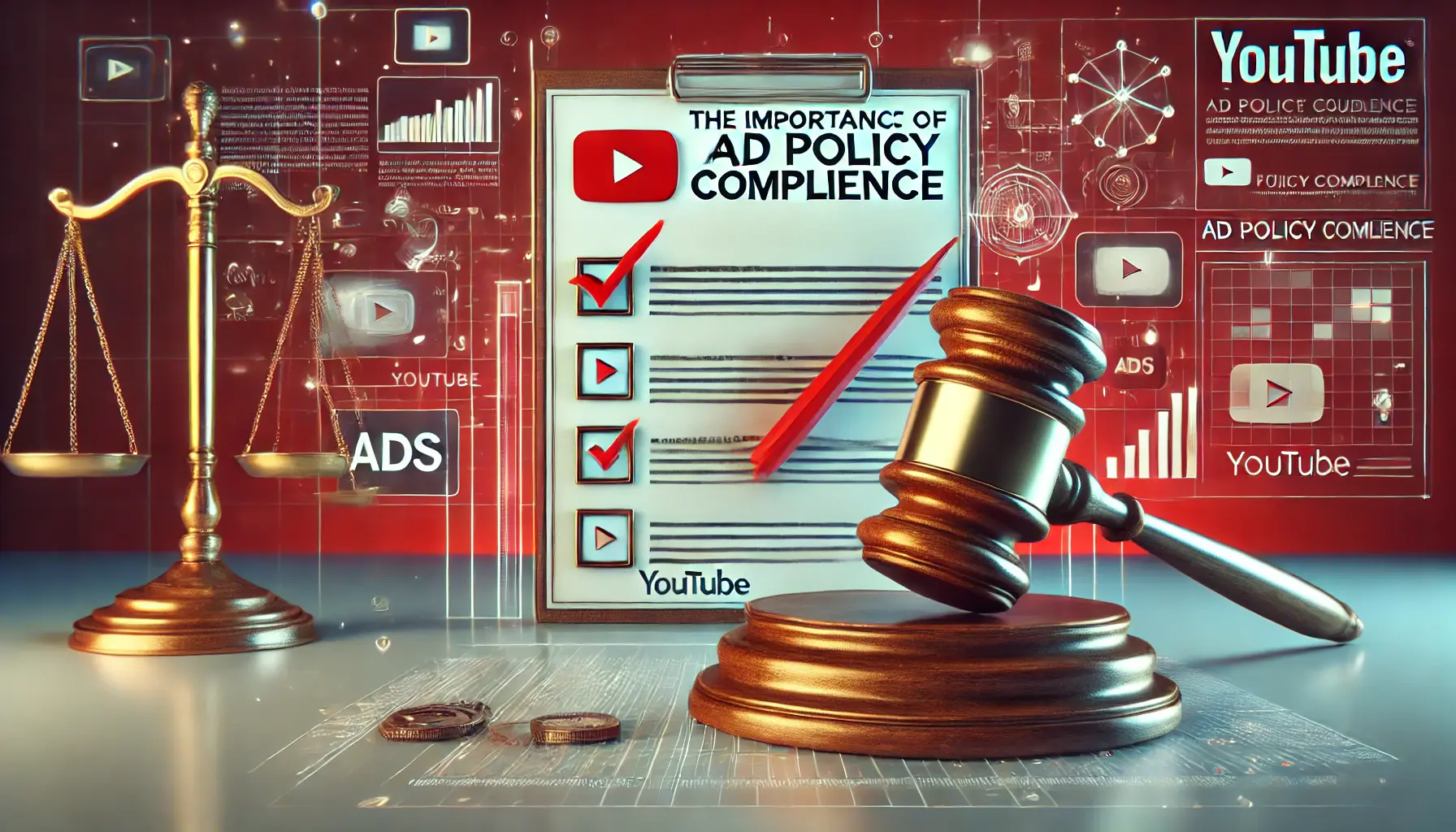
undefined
Importance of Ad Policy Compliance
Compliance is more than just avoiding penalties; it’s about building trust with your audience.
Adherence to policies ensures that your ads are shown to the right audience without interruptions, boosting your campaign’s effectiveness.
It also helps in maintaining a positive relationship with YouTube, preventing potential account bans or suspensions.

Visual representation of common violations to avoid in YouTube advertising.
Common Violations to Avoid
Some common violations include:
- Using misleading or exaggerated claims.
- Displaying inappropriate visuals or language.
- Failing to disclose partnerships or sponsorships.
- Promoting restricted products without proper approvals.
Understanding these common pitfalls can help you create ads that align with YouTube’s expectations.

Representation of recent updates to YouTube’s advertising policies.
Recent Updates to YouTube’s Advertising Guidelines
YouTube frequently updates its policies to adapt to evolving industry standards and user expectations.
Staying informed about these updates is essential.
For example:
- Ad disclosure requirements have become more stringent.
- Sensitive content is now taken more seriously.
Regularly reviewing YouTube’s policy page can help you stay ahead and avoid unexpected violations.
Mastering YouTube’s advertising policies provides the foundation for compliance and success in your advertising campaigns.
The knowledge gained here will set the stage for creating compelling, policy-compliant content, which we will cover in the next section.
Mastering YouTube’s advertising policies is essential for compliance and effective campaign management.
- Learn the do’s and don’ts of advertising policies.
- Avoid common violations such as misleading claims or inappropriate visuals.
- Stay updated on recent policy changes to adapt effectively.
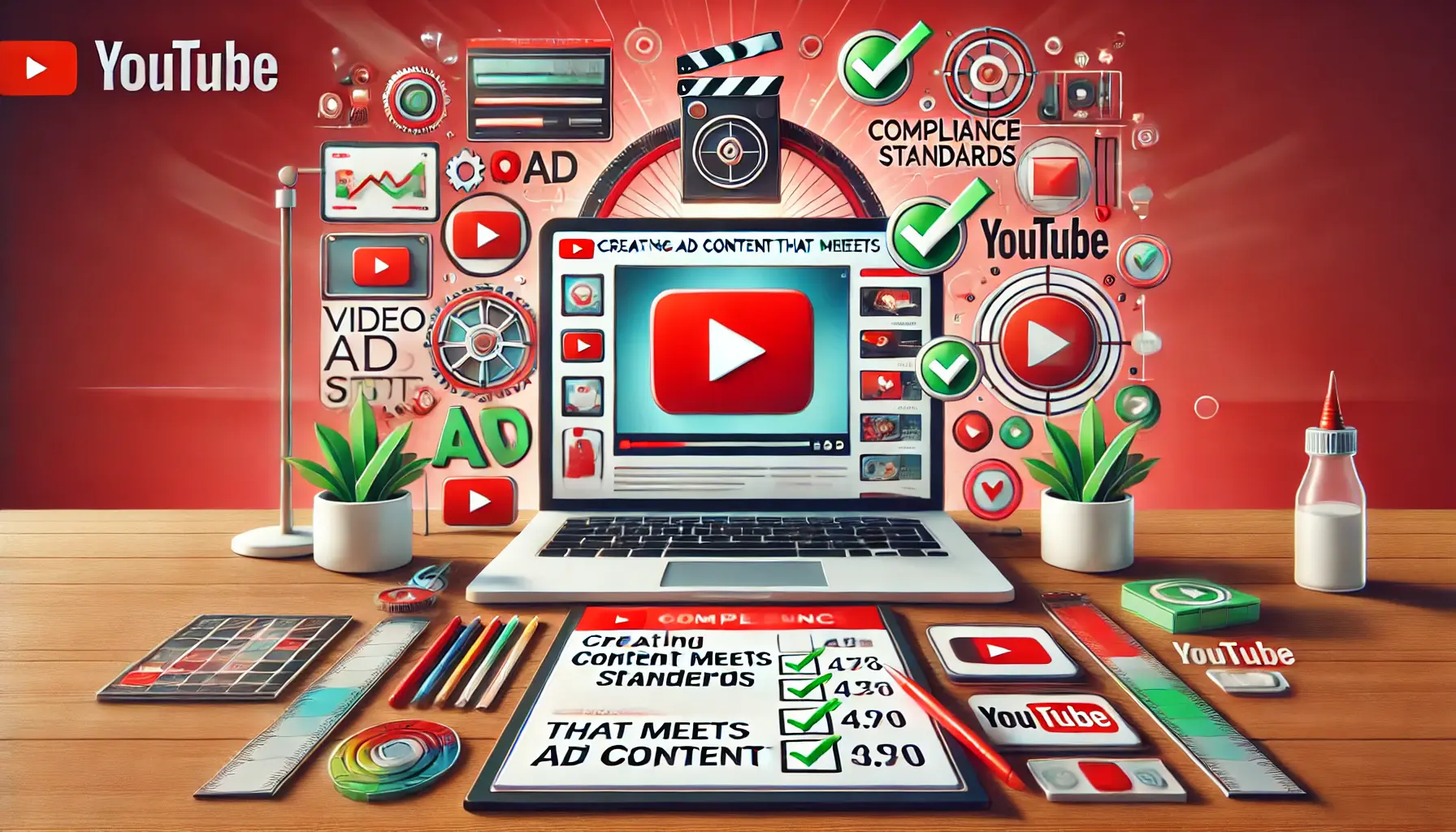
undefined
Creating Ad Content that Meets Compliance Standards
Creating YouTube ads that adhere to compliance standards is essential for running successful campaigns without interruptions.
A well-compliant ad ensures that your content aligns with YouTube’s advertising policies, increases approval rates, and fosters trust with your audience.
By focusing on ethical and creative ad design, you can achieve impactful results while staying within YouTube’s guidelines.

Illustration of ensuring ad copy compliance with YouTube guidelines.
Ensuring Ad Copy Follows YouTube Guidelines
Ad copy plays a critical role in meeting compliance standards.
To stay within YouTube’s rules:
- Avoid using sensational language or unverified claims in your headlines and descriptions.
- Ensure all promotional text is factual, supported by credible data.
- Refrain from including offensive or inappropriate terms.
By keeping your ad copy clear, concise, and factual, you reduce the likelihood of rejection and increase audience engagement.

Illustration of compliant use of visual and audio elements in YouTube advertising.
Compliant Use of Visual and Audio Elements
Both visual and audio elements are important to ensure compliance.
Here’s how you can align these elements with YouTube’s policies:
- Ensure all imagery is appropriate for the intended audience and avoids offensive or controversial themes.
- Avoid using misleading visuals that do not reflect the actual product or service.
- Keep audio free of inappropriate language or potentially sensitive topics.
Consistency between your ad visuals and the product/service being promoted is key to earning audience trust and policy approval.

Illustration of avoiding misleading or controversial claims in YouTube advertising.
Avoiding Misleading or Controversial Claims
YouTube takes misleading or controversial claims very seriously.
To avoid violations:
- Provide accurate and transparent information about your products or services.
- Use disclaimers when discussing results that may vary between users.
- Avoid making exaggerated promises that cannot be substantiated.
Adopting a straightforward approach in your claims helps establish credibility and reduces the risk of policy breaches.

Illustration of aligning YouTube ad campaigns with community standards.
How to Align Your Campaign with Community Standards
YouTube’s community standards extend beyond advertising policies and emphasize respect for viewers.
To align your campaign with these standards:
- Ensure your content does not promote hate speech, violence, or discrimination.
- Create ads that add value to viewers by addressing their needs and interests.
- Be respectful of cultural sensitivities in ad targeting to global audiences.
By creating ads that respect community standards, you contribute to a positive and engaging user experience on YouTube.
By creating ad content that meets compliance standards, you not only get your ads approved but also build a trustworthy and reliable presence on YouTube.
With this strong foundation, you’ll be able to maximize the impact of your campaigns while adhering to YouTube’s guidelines.
Next, we’ll look at how to use tools and features to stay compliant with ease.
Creating compelling and compliant ad content ensures approval and audience trust.
- Focus on clear and factual ad copy.
- Ensure visuals and audio align with policies and reflect your product accurately.
- Adopt a straightforward approach to avoid exaggerated claims.

Illustration of leveraging tools and features for YouTube ad compliance.
Leveraging Tools and Features for Compliance
Ensuring compliance with YouTube’s advertising policies can be challenging, but leveraging the right tools and features can simplify the process.
YouTube and Google Ads provide a variety of resources to help advertisers monitor, manage, and optimize their campaigns while adhering to platform policies.
By utilizing these tools effectively, you can maintain compliance and focus on achieving your advertising goals.
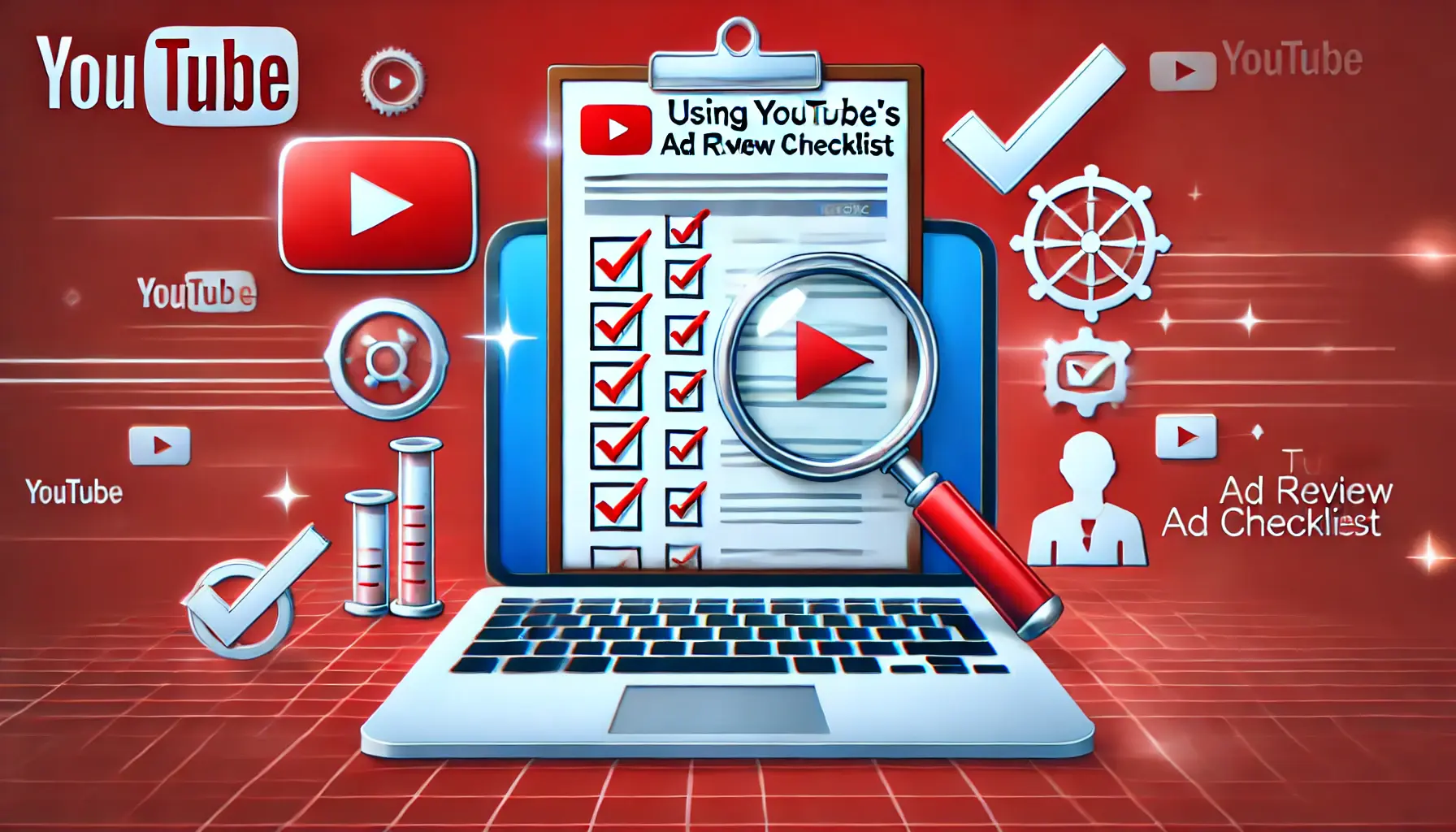
Illustration of using YouTube’s ad review checklist for compliance.
Using YouTube’s Ad Review Checklist
YouTube offers an ad review checklist that helps advertisers ensure their ads meet policy requirements before submission.
This checklist includes steps such as:
- Reviewing ad copy for accuracy and compliance with policies.
- Ensuring visuals and audio elements align with community standards.
- Verifying that targeting options do not breach sensitive content guidelines.
By incorporating this checklist into your workflow, you can catch potential violations early and avoid unnecessary rejections.

Illustration of the benefits of completing YouTube’s Compliance Certification Program.
Benefits of YouTube’s Compliance Certification Program
YouTube’s Compliance CertificationAn official document or process verifying knowledge or compliance with a standard. Program is designed to educate advertisers about best practices and policy guidelines.
Participants gain insights into:
- Ad design strategies that align with YouTube’s standards.
- Common pitfalls to avoid in ad creation and targeting.
- How to address compliance concerns proactively.
Certification not only boosts your understanding of YouTube’s policies but also demonstrates your commitment to ethical advertising.
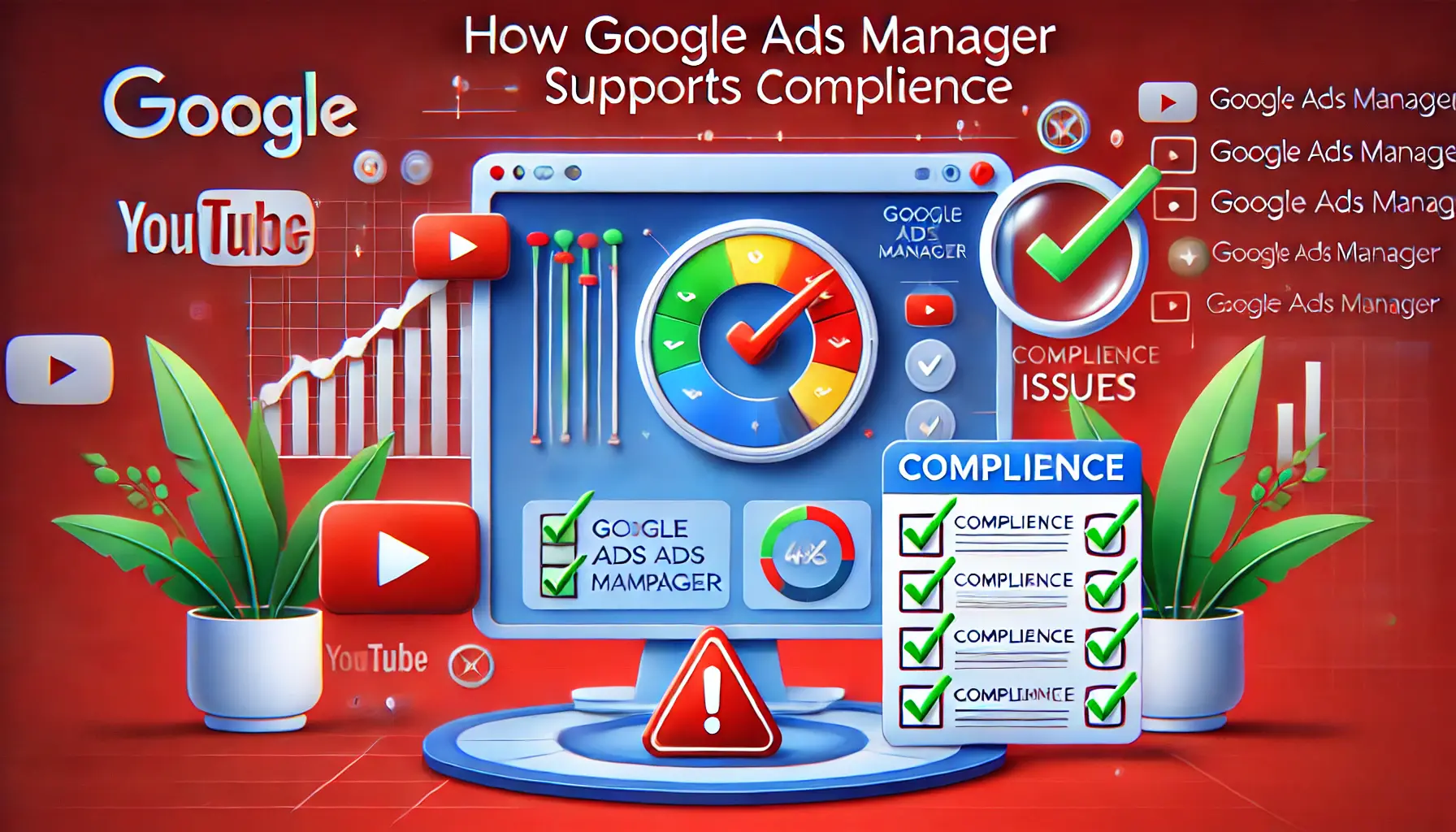
Illustration of how Google Ads Manager supports compliance in YouTube advertising.
How Google Ads Manager Supports Compliance
Google Ads Manager offers powerful tools to help you stay compliant with YouTube’s advertising policies.
Key features include:
- Real-time monitoring of ad performance and policy adherence.
- Automatic flagging of potential policy violations.
- Detailed reports on ad approvals and rejections.
These features allow you to identify and resolve issues promptly, ensuring smoother campaign management.

Illustration of automated tools for ad monitoring and compliance scanning.
Automated Tools for Ad Monitoring
Automation plays a crucial role in maintaining compliance.
Tools like Google’s policy compliance AI can:
- Pre-scan ads for potential violations before submission.
- Provide suggestions to optimize your content in accordance with compliance.
- Alert you about changes in YouTube’s policies that may affect your campaigns.
By integrating these tools into your advertising strategy, you can save time and reduce the risk of non-compliance.
By using YouTube’s tools and features, you will not only stay compliant but also make your ad campaigns more effective.
Being proactive and utilizing the resources at your fingertips ultimately allows you to create engaging ads while staying within platform guidelines.
Next, we’ll dive into compliance issues and how to work through them should they occur.
Using tools and features provided by YouTube and Google Ads simplifies compliance and campaign management.
- Leverage YouTube’s ad review checklist to catch potential violations early.
- Participate in the Compliance Certification Program to deepen your understanding.
- Use Google Ads Manager to monitor and optimize compliance.
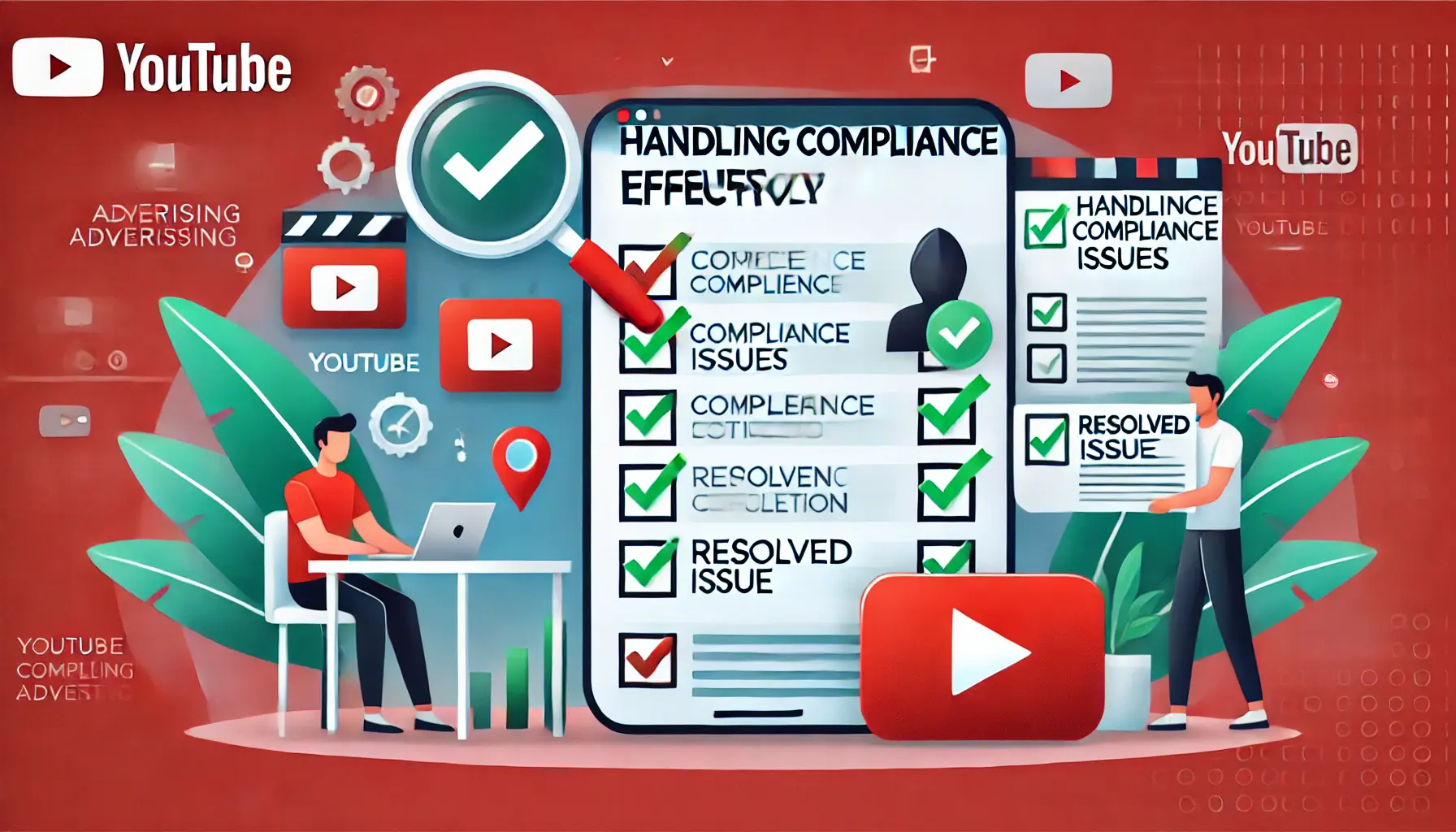
undefined
Handling Compliance Issues Effectively
Even with the best practices in place, compliance issues can arise during YouTube advertising campaigns.
These issues, ranging from ad rejections to policy violations, can disrupt your efforts and impact your campaign performance.
However, by understanding how to address these challenges effectively, you can minimize disruptions and maintain a successful advertising strategy.
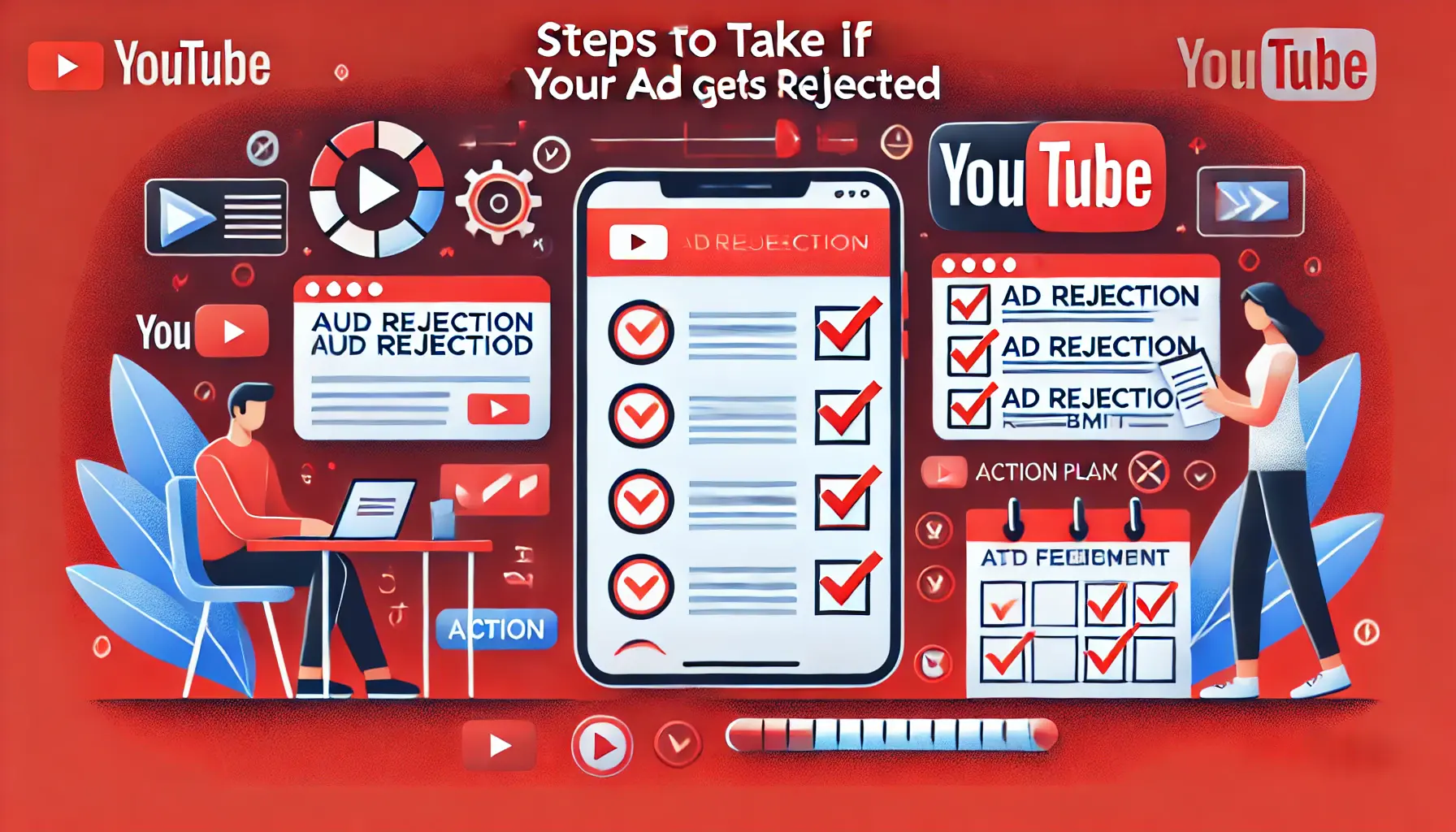
Illustration of the steps to take if your YouTube ad gets rejected.
Steps to Take if Your Ad Gets Rejected
Ad rejections can result from minor or major policy violations.
If your ad gets rejected, here’s what you should do:
- Review the rejection reason: YouTube provides a detailed explanation for rejections, outlining the specific policy violation.
- Update the ad content: Make the necessary adjustments to ensure the ad complies with the specified guidelines.
- Resubmit the ad: Once corrections are made, submit the revised ad for review.
Addressing rejections promptly helps maintain your campaign timeline and minimizes disruptions to your advertising goals.
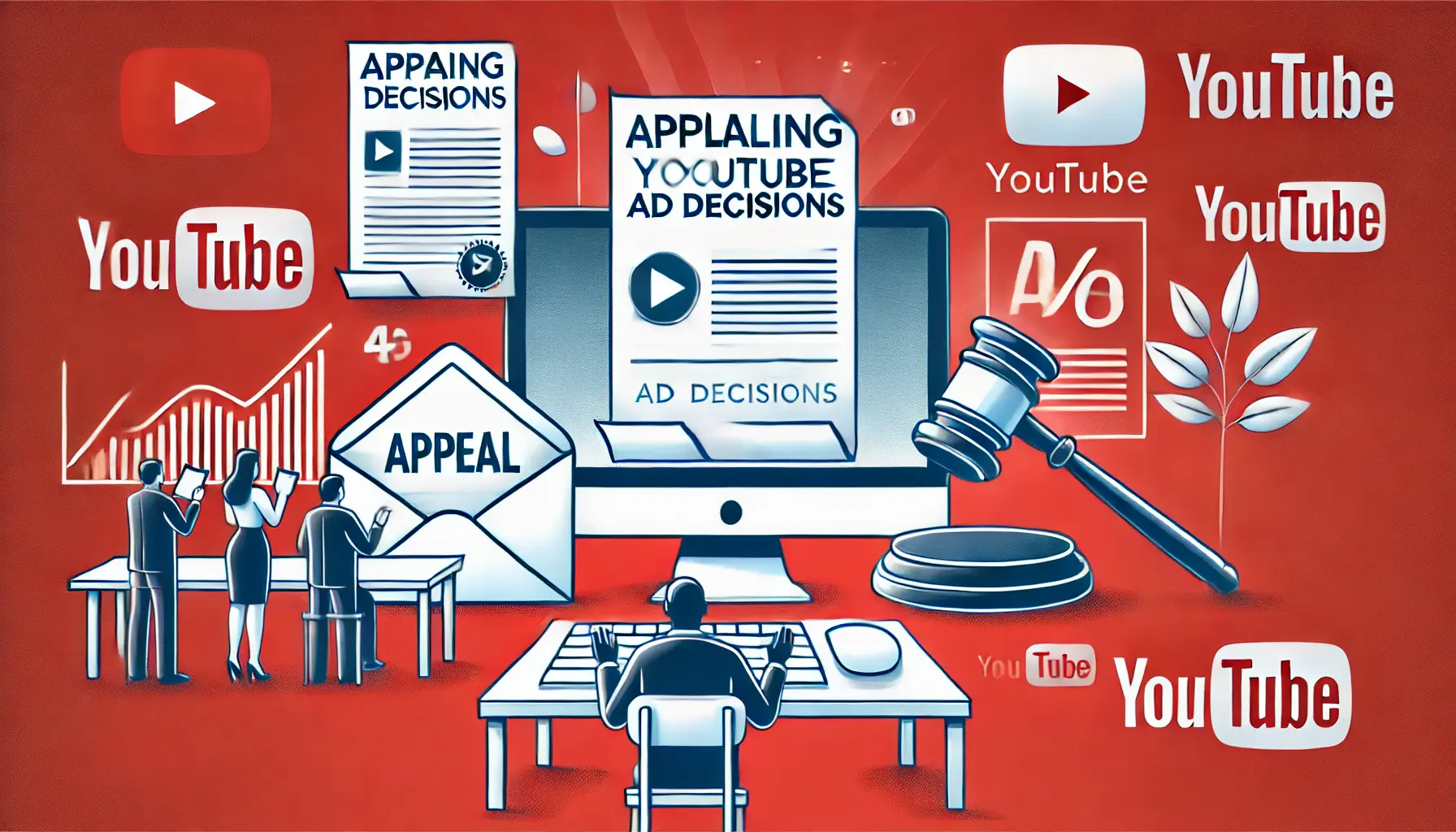
Illustration of the process of appealing YouTube ad decisions.
Appealing YouTube Ad Decisions
In cases where you believe your ad was rejected unfairly, YouTube allows advertisers to appeal the decision.
To file an appeal:
- Access the appeal option: Navigate to the notification for the rejected ad in your account and select the appeal option.
- Provide supporting information: Include any relevant evidence or explanations that demonstrate compliance with YouTube’s policies.
- Wait for a decision: YouTube will review your appeal and provide feedback on whether the rejection will be overturned.
While appealing decisions can be time-consuming, it ensures that your ads are evaluated fairly and objectively.

Illustration of best practices to avoid future YouTube ad rejections.
Best Practices for Avoiding Future Rejections
To minimize the chances of future compliance issues, follow these best practices:
- Stay updated on policies: Regularly review YouTube’s advertising policies to keep up with changes and updates.
- Conduct pre-submission reviews: Use YouTube’s ad review checklist to identify potential violations before submission.
- Test ads before launch: Run ads through compliance tools to catch issues early.
- Consult experts: Work with advertising professionals who understand YouTube’s policies and can guide you through compliance processes.
Implementing these practices reduces the risk of rejections and ensures smoother campaign execution.

undefined
Learning from Compliance Case Studies
Analyzing real-world compliance case studies can be instructive.
For example:
- See how successful brands resolved compliance issues and avoided recurring violations.
- Learn from common mistakes made by advertisers and ways to avoid them.
- Understand how companies navigate appeals and resubmissions effectively.
Studying these examples helps you prepare for potential challenges and adopt proactive measures in your campaigns.
Handling compliance issues is essential to maintaining a strong presence on YouTube.
By promptly addressing rejections, appealing decisions when necessary, and implementing preventive measures, you can overcome obstacles, successfully run campaigns, and reduce the risk of future issues.
In the next and final section, we will explore how to stay ahead of compliance challenges for long-term success.
Compliance issues can arise, but addressing them effectively minimizes disruptions.
- Review rejection reasons and make necessary adjustments before resubmitting.
- Appeal decisions when appropriate, providing evidence to support your case.
- Implement best practices to avoid future rejections.

Illustration of staying ahead of compliance challenges in YouTube advertising.
Staying Ahead of Compliance Challenges
In the ever-evolving landscape of YouTube advertising, staying ahead of compliance challenges is critical for long-term success.
By proactively addressing potential issues, keeping up with policy updates, and fostering a culture of compliance, advertisers can maintain smooth operations and achieve their campaign goals.
Here’s how you can ensure your advertising efforts remain on track and in line with YouTube’s standards.
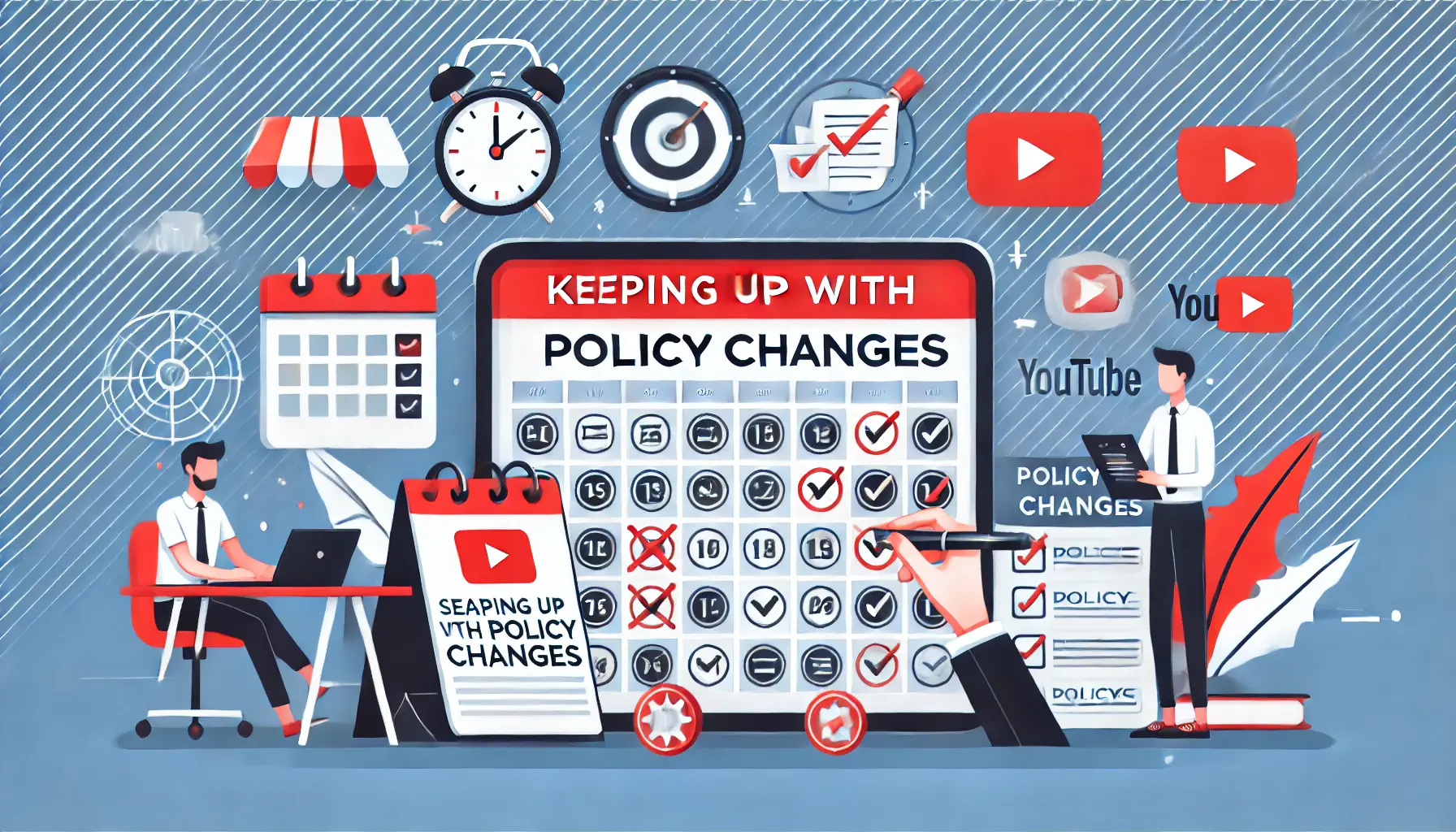
Illustration of staying updated with YouTube advertising policy changes.
Keeping Up with Policy Changes
YouTube frequently updates its advertising policies to reflect changes in industry standards, legal requirements, and user expectations.
Staying informed about these updates is essential.
Here are some tips:
- Subscribe to policy update notifications: YouTube provides alerts for any changes to its policies.
- Regularly review the YouTube Help Center: This resource outlines all current advertising guidelines and any recent updates.
- Join industry forums: Engage with other advertisers to share insights and learn about upcoming changes.
Keeping up with policy changes ensures that your campaigns remain compliant and avoids unexpected disruptions.

Illustration of a team training on compliance standards in YouTube advertising.
Training Your Team on Compliance Standards
Compliance should be a team effort.
Providing your team with the knowledge and tools they need to understand and implement YouTube’s advertising standards is crucial.
Consider the following:
- Organize regular training sessions: Update your team on policy changes and best practices.
- Provide access to compliance resources: Share YouTube’s guidelines and tools for easy reference.
- Assign a compliance officer: Designate a team member to oversee ad compliance and address any concerns.
With a well-trained team, you can ensure that compliance remains a priority throughout your advertising strategy.
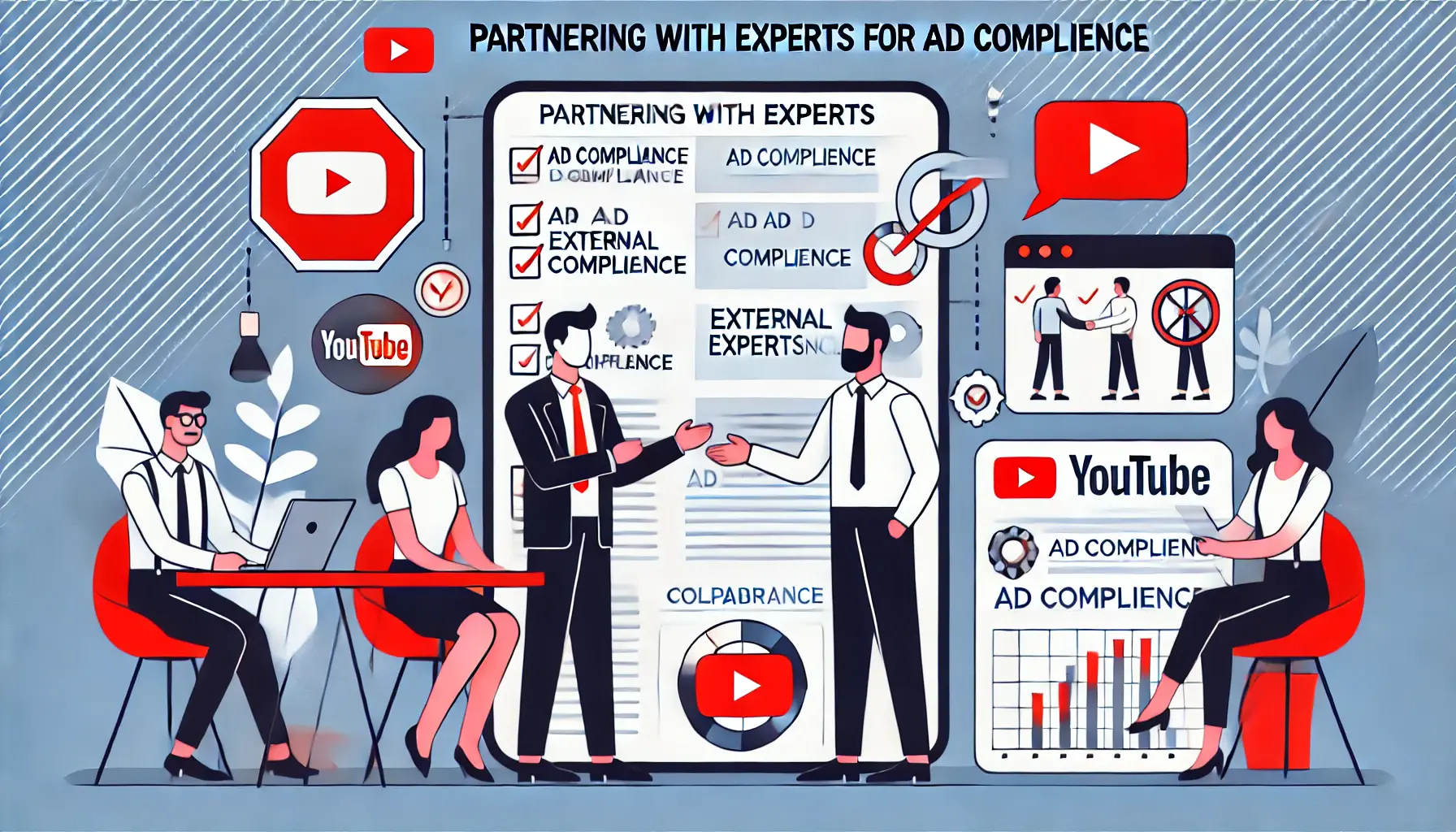
Illustration of collaborating with experts for ad compliance.
Partnering with Experts for Ad Compliance
Sometimes, navigating YouTube’s complex policies can become burdensome.
Partnering with experts makes this process much easier.
Here’s how they will help you:
- Audits: Professionals will review your campaigns to identify any potential issues that could lead to disapproval.
- Specific advice: You will receive tailored guidance specific to your industry and target audience.
- Policy updates: Experts stay updated on any changes to policies and ensure your campaigns align with them.
Working with experts ensures that your campaigns are both effective and compliant.

Illustration of why compliance is key to long-term success in YouTube advertising.
Why Compliance is Key to Long-Term Success
Compliance isn’t just about avoiding penalties; it’s a strategic advantage that builds trust with your audience and fosters sustainable growth.
Here’s why:
- Protects your brand reputation: Compliant ads demonstrate professionalism and integrity.
- Increases ad approval rates: Well-compliant ads face fewer rejections, ensuring smoother campaign execution.
- Boosts audience trust: Transparent and ethical advertising resonates with viewers and encourages engagement.
By prioritizing compliance, you set your business up for success in the competitive world of YouTube advertising.
Staying ahead of compliance challenges requires continuous learning, collaboration, and a commitment to ethical advertising.
By keeping up with policy changes, training your team, and seeking expert guidance when needed, you can navigate YouTube’s advertising landscape confidently and achieve your long-term goals.
Proactively staying ahead of compliance challenges ensures long-term success in YouTube advertising.
- Keep updated on policy changes through YouTube resources.
- Train your team regularly on compliance standards.
- Collaborate with experts for tailored guidance and audits.

Illustration of achieving success through compliance in YouTube advertising.
Achieving Success with Compliance in YouTube Advertising
YouTube advertising holds huge potential for effective audience reach for businesses, but compliance is the foundation of its long-term success.
In this article, critical elements were explored: from understanding policies, creating effective ad content, leveraging tools, and addressing challenges.
Embed these factors into your advertising strategy to unleash the full power of YouTube as a platform with minimal disruptions.

undefined
Key Takeaways from Compliance Strategies
Here are the most important insights from the article:
- Understanding Policies: Learn YouTube’s advertising policies to ensure your campaigns align with the platform’s expectations.
- Create Policy-Compliant Content: Ad copy, visuals, and audio should be crafted according to YouTube’s accuracy, transparency, and appropriateness standards.
- Tools to Use for Compliance: Leverage YouTube’s ad review checklists and automated tools to simplify your campaign-building process.
- Addressing Issues Effectively: Learn how to manage rejections, file appeals, and implement best practices to minimize future policy violations.
- Staying Ahead of Challenges: Regularly update your team on compliance standards, partner with experts, and monitor policy changes to maintain a competitive edge.
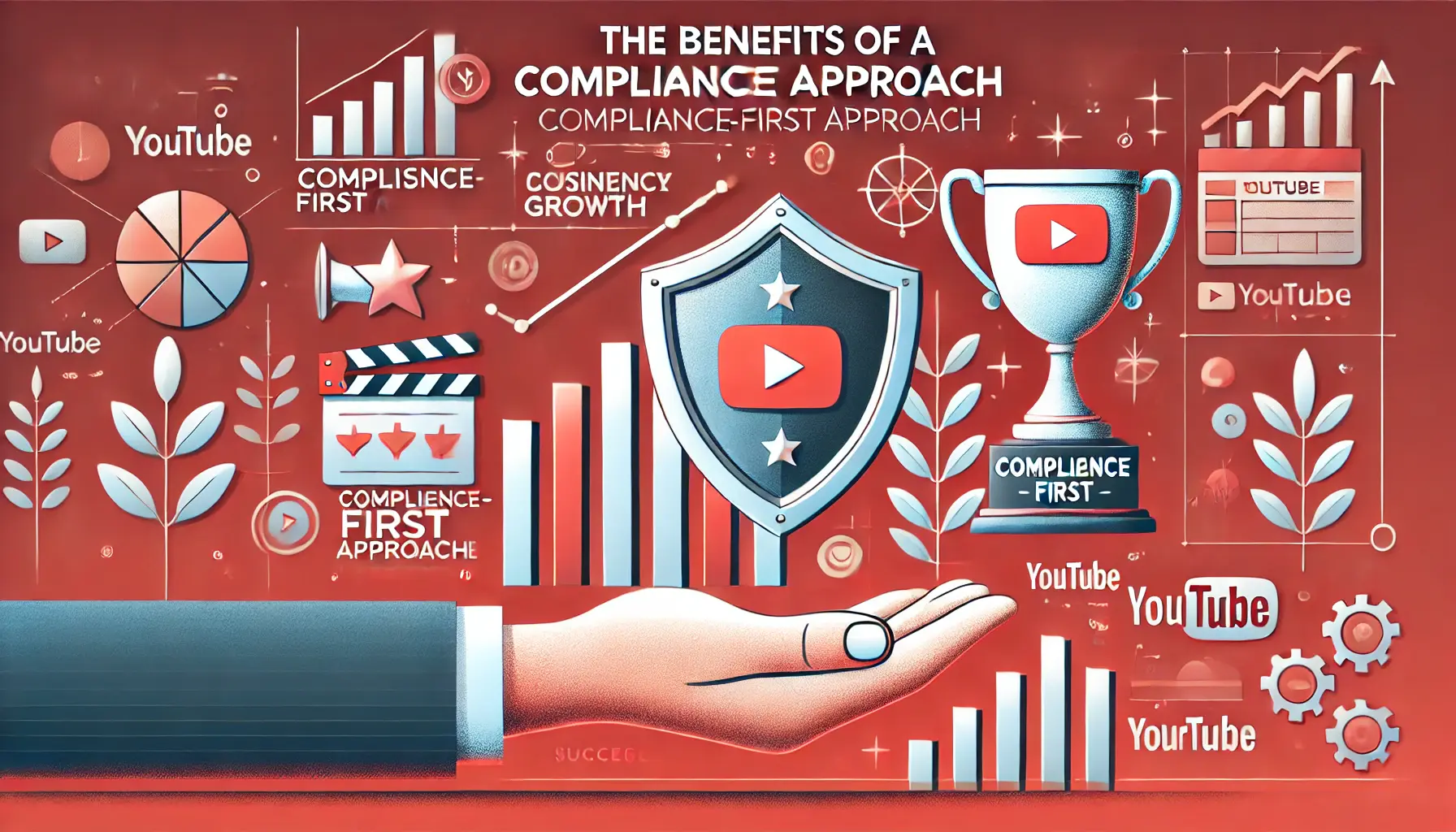
Illustration of the benefits of a compliance-first approach in YouTube advertising.
The Benefits of a Compliance-First Approach
Adopting a compliance-first approach to YouTube advertising yields numerous benefits:
- Enhanced Campaign Approval Rates: Fewer rejections mean smoother campaign execution and better results.
- Audience Trust and Engagement: Transparent and ethical ads foster credibility and drive higher audience engagement.
- Brand Reputation Protection: Compliance reflects professionalism, protecting your brand from potential reputational damage.
By making compliance a priority, you create a foundation for sustainable success and establish your brand as a trustworthy advertiser on YouTube.

Illustration of moving forward with confidence in YouTube advertising compliance.
Moving Forward with Confidence
Compliance is not just about following the rules; it’s about leaving a mark on your audience and driving real business growth.
The tools, strategies, and insights shared in this article equip you to handle challenges confidently and maximize your YouTube advertising ROI.
Success in YouTube advertising starts with compliance but thrives with creativity, consistency, and a commitment to ethical practices.
Success in YouTube advertising is built on a foundation of compliance, creativity, and consistency.
- Adopt a compliance-first approach to protect your brand’s reputation.
- Leverage tools and insights to maximize ad effectiveness.
- Engage in continuous learning and ethical practices to foster growth.

undefined
Your campaigns can be managed by an agency specialized in Google Ads, check out our service page.
Frequently Asked Questions About Compliance in YouTube Advertising
Below are some of the common questions to help shed light on compliance challenges and strategies in YouTube advertising.
If your ad violates policies, it may be rejected or removed, and repeated violations could result in account suspension.
Always review YouTube’s policies before submission to avoid these issues.
YouTube updates its policies regularly to reflect changes in industry standards and regulations.
Staying informed through the YouTube Help Center or subscribing to updates is essential for advertisers.
You can use YouTube’s ad review checklist and Google Ads Manager.
These tools help identify potential violations and streamline the process of creating compliant ad campaigns.
Yes, you can appeal YouTube’s decision by providing supporting evidence and explanations.
Appeals are reviewed to determine if the rejection can be overturned based on compliance.
To avoid rejections, familiarize yourself with YouTube’s policies, review ads before submission, and use compliance tools to catch potential issues early in the process.
Compliance ensures that your ads are approved, builds trust with your audience, and protects your brand’s reputation.
It is essential for maintaining successful long-term advertising campaigns on YouTube.
It is a program designed to educate advertisers on best practices and policy guidelines.
Participants gain insights into creating compliant ad campaigns and avoiding common pitfalls.
Yes, partnering with compliance experts or agencies can simplify navigating policies, auditing campaigns, and staying updated on new regulations.
It can save time and reduce risks for advertisers.
Organize training sessions on YouTube policies, provide access to resources like guidelines, and assign a compliance officer to oversee campaigns and address any concerns.
